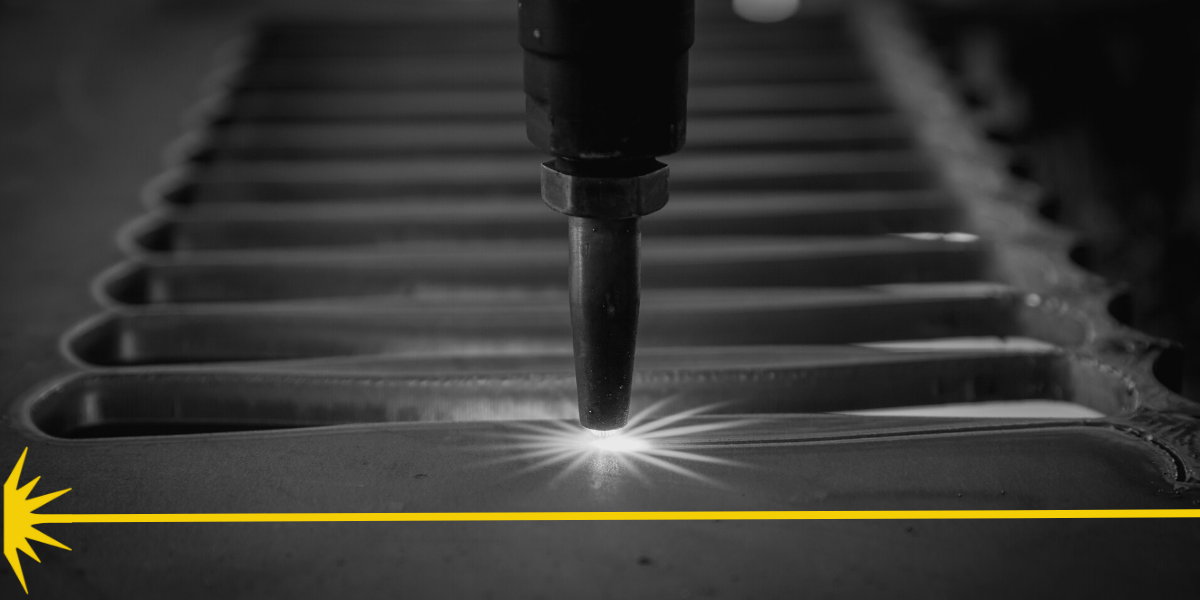
Laser cutting is a process where the laser beam cuts the material by vaporizing it. There are many different types of lasers that can be used for laser cutting.
Types of Lasers
One type is the CO2 gas laser, which has a number of advantages over other lasers when it comes to material selection, power consumption and cost effectiveness. In this article we will discuss what kind of lasers are used in laser cutting and what each one offers for your project needs.

Gas Lasers
A CO₂ laser is a type of gas laser where electricity runs through a gas-filled tube of carbon dioxide, nitrogen, hydrogen and helium, which produces light. The light produced by CO₂ lasers is invisible, which falls in the infrared range of the light spectrum.
Because the gas-filled tube is surrounded by mirrors, the light it produces is much more powerful than normal light. The fully reflective mirrors cause the light waves passing through to build intensity, increasing as it travels back and forth through the tube. Once the light becomes bright enough, it pass through the partially-reflective mirror.
CO₂ lasers are the most common type of laser used for laser cutting. They have a number of advantages over other lasers when it comes to material selection, power consumption and cost effectiveness. CO₂ lasers are best used for cutting materials like plastics, rubber, and non-metallic materials. They are not as good for cutting metals because the metal can cause sparks or fire that will damage the mirrors.
Fiber Lasers
Fiber lasers are a type of solid state laser where electricity runs through a fiber optic cable made of silica glass to guide light. Because the it is straighter and smaller, the laser beam is more precise than other types of lasers. The light produced by fiber lasers is in the visible range of the light spectrum and very bright, making them good for cutting all types of materials including metal.
The fibers can be bent and twisted without losing power or generating heat. Due to the different wavelengths, fiber lasers are widely used in industrial environments to perform cutting, marking, welding, drilling and more. They are also have a small footprint, electrical efficiency and low maintenance and operating costs, making them a popular choice for laser cutting applications.
Fiber lasers are categorized by using the following criteria:
- Laser source: Fiber lasers vary according to the material with which the laser source is mixed because they produce different wavelengths.
- Mode of operation: Laser beams can either be pulsed at a set repetition rate to reach high-peak powers (pulsed fiber lasers) or, they can continuously send the same amount of energy (continuous-wave fiber lasers).
- Laser power: Laser power is expressed in watts and represents the average power of the laser beam.
- Mode: The mode refers to the size of the core (where light travels) in the optical fiber. There are two types of modes: single-mode fiber lasers and multi-mode fiber lasers. As a general rule, single-mode lasers convey laser light more efficiently and have a better beam quality.
Crystal Lasers
Crystal lasers are a type of laser that use a crystal as the lasing medium. The most common type of crystal laser is the Nd:YAG (neodymium-doped yttrium aluminum garnet) laser, which uses neodymium ions to amplify light. The light produced by crystal lasers is in the visible range of the spectrum and very bright, making them good for cutting all types of materials including metals.
Crystal lasers have the ability to do very high-powered cutting, especially when low repetition is required, making these lasers good for boring, engraving and welding.
Although a high-powered laser, a crystal laser cutting machine doesn’t last as long as other laser machines and are very expensive to repair equipment.
Choosing Your cut
CO² lasers are probably the most widely used gas laser and are mainly used for laser marking, laser cutting and laser welding. Although a CO² laser can cut through most metals without difficulty, they are still not as efficient at metal cutting compared to fiber or crystal lasers.
When choosing a laser cutter, it is important to consider the types of materials you will be cutting. If most of your work is done on metals, then a fiber or crystal laser could be the best choice. However, if you need to cut a variety of materials including plastics, rubber, and non-metallic materials, then a CO² laser may be right for your job.
In conclusion, laser cutting offers a wide range of advantages for many applications from industrial to hobbyist uses. With different types of lasers available on the market today there is a solution for any need or budget.
So why choose Precision Laser Cutting?
Precision.
Accuracy.
Customization.
And guaranteed high quality cuts!
CONTACT PLC
Choose Precision Laser Cutting for your laser cutting services and more. We are committed to producing quality work and are confident in achieving ultimate customer satisfaction. Contact us today to get started.
 Precision Laser Cutting
Precision Laser Cutting
Your manufacturing solutions experts. With over 70 years of combined plate processing experience, Precision Laser is committed to providing high-quality, expert service and cost-effective solutions.



